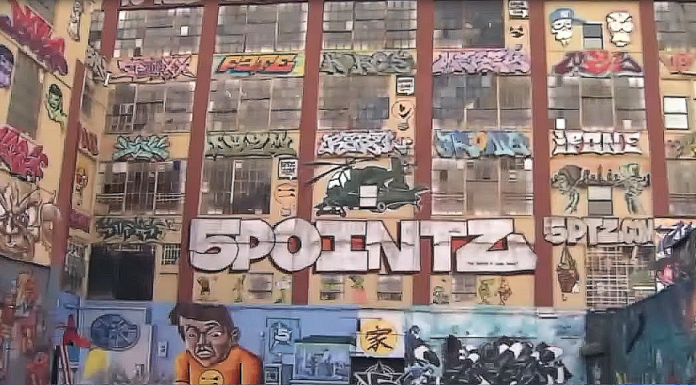Should graffiti be protected from property owners?
That’s a question many people would consider ludicrous, but a New York City court awarded graffiti “artists” $6.75 million in damages when a building owner whitewashed what he considered vandalism.
Now, real estate developer G&M Realty is petitioning the U.S. Supreme Court for help.
“We are hopeful the Court will agree to review [the] case, which concerns important (and interesting) issues,” an attorney for the company told The Epoch Times on Sunday.
The case involves dilapidated warehouses in Long Island City, Queens, where graffiti routinely defaces private property.
The area is informally known by several names, “5Pointz,” “The Institute of Higher Burnin” and the “5Pointz Aerosol Art Center.”
According to The Art Newspaper, graffiti litters the buildings’ exterior and interior walls, and attracts people from all over the city who then paint on top of other peoples’ street markings.
The 5Pointz area has such a longstanding reputation for vandalism that a Bill Clinton-appointed judge at the U.S. District Court for the Eastern District of New York declared that cleaning up the warehouses violated the graffiti artists’ rights.
Since 2013, G&M Realty has been trying to repair the warehouses and make room for luxury residential apartments.
Local activists have stood in the way, and cried foul when the company painted over parts of the graffiti Mecca with white paint.
With the help of locally connected lawyers, the activists claimed the real estate company destroyed many valuable works of art.
U.S. District Judge Frederic Block agreed and blasted owner Jerry Wolkoff, now deceased.
“If not for Wolkoff’s insolence, these damages would not have been assessed,” wrote Block, who is reportedly a 5Pointz fan, in a 2018 decision.
G&M appealed the ruling, but the U.S. Court of Appeals for the 2nd Circuit upheld it earlier this year.
Both decisions rely on the Visual Artists Rights Act of 1990, which authorizes courts to impose damages of up to $150,000 per incident against the owner of a work of visual art of “recognized stature” if the owner destroys it.
Ironically, the applied logic makes G&M both the owner of the graffiti and liable for damaging it, even if they don’t want it and consider it vandalism.
In their Supreme Court petition, attorneys for the realty company say the case “raises a host of constitutional red flags.”

